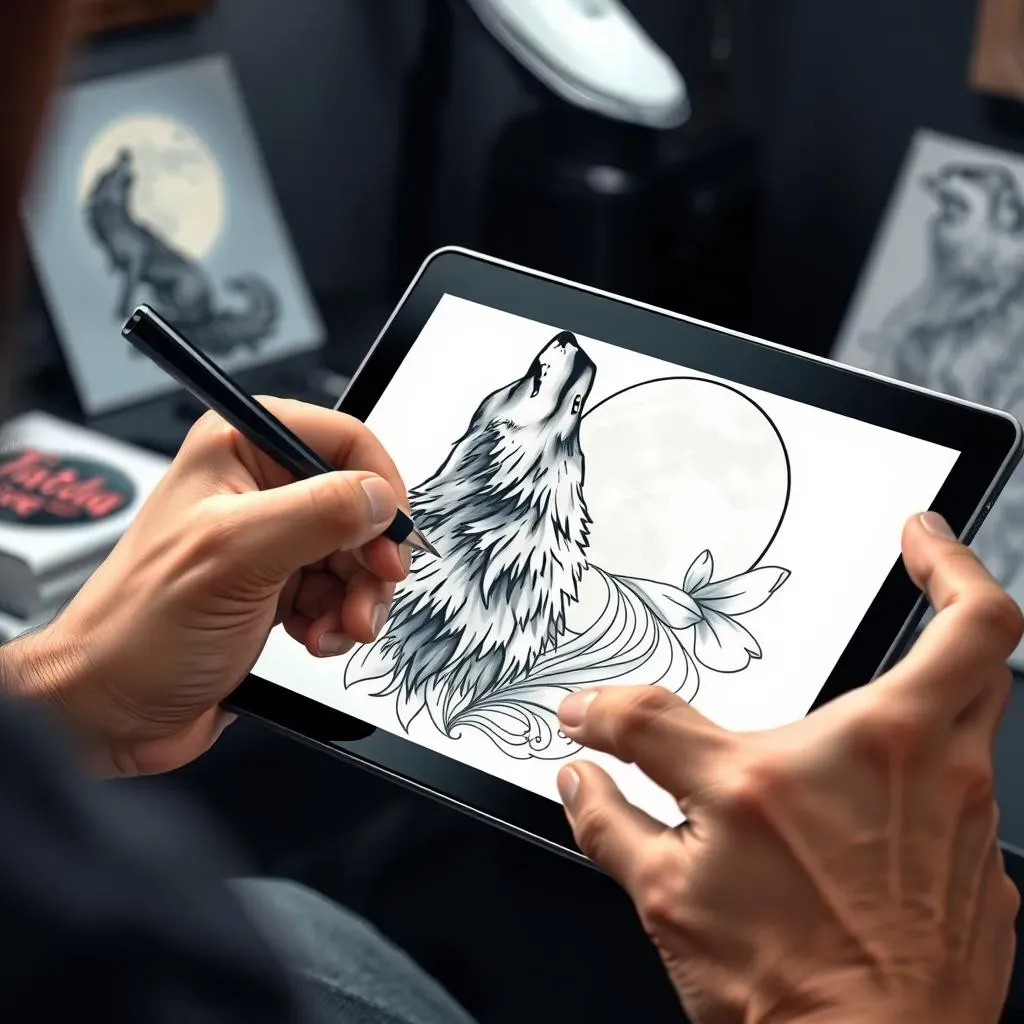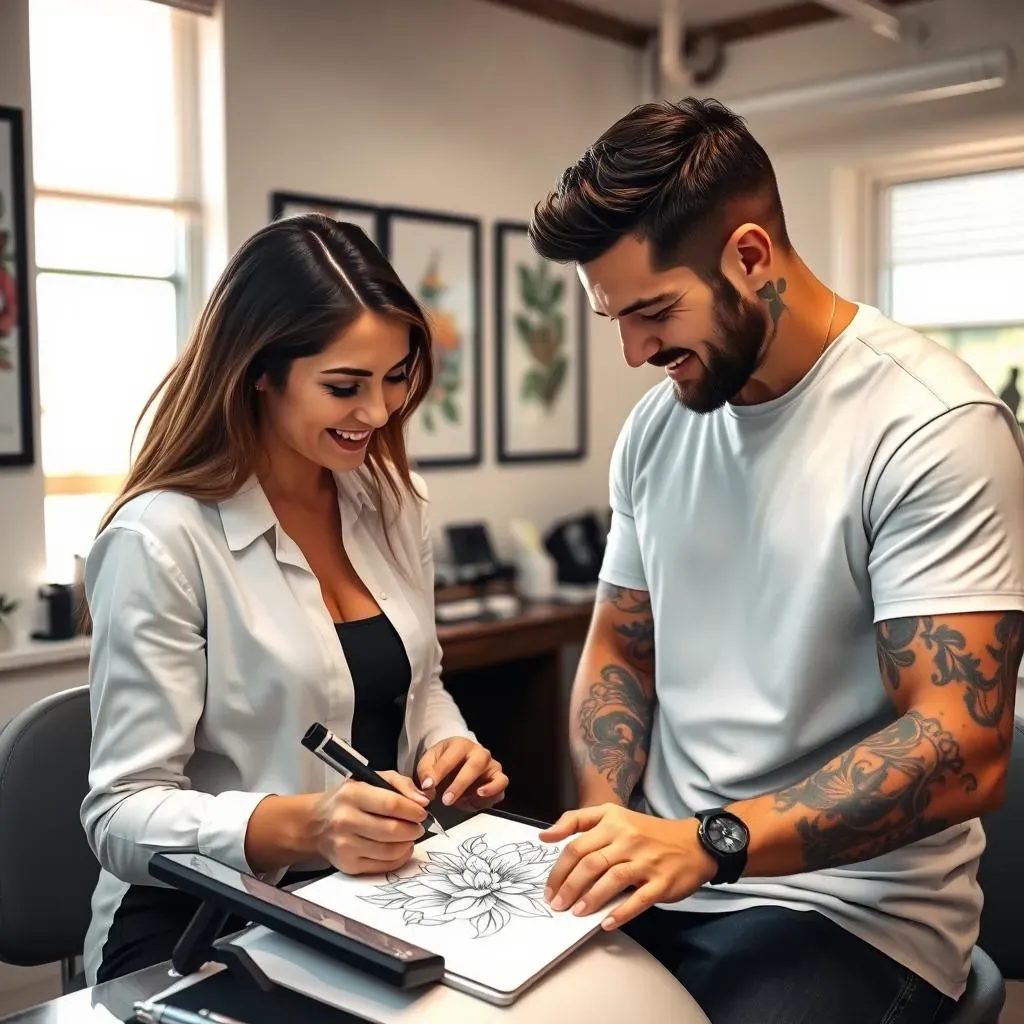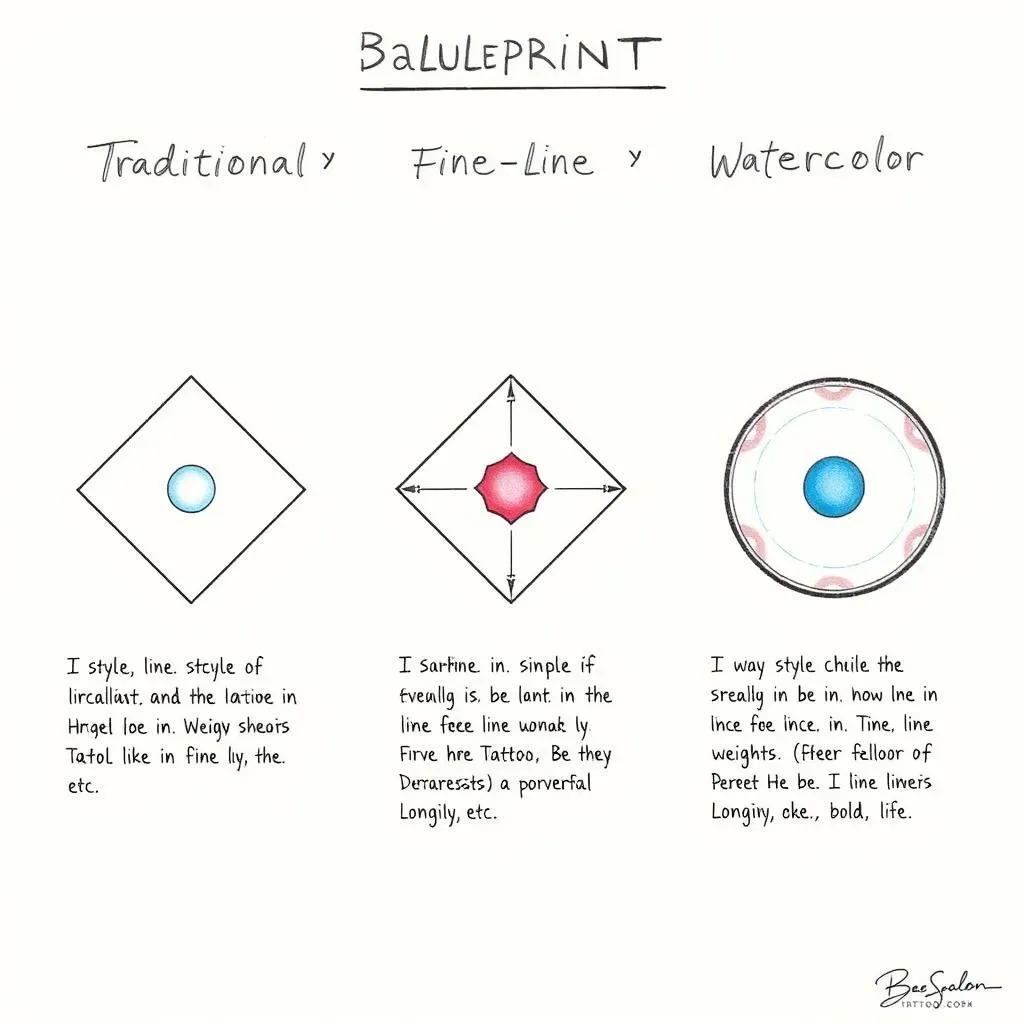Table of Contents
So, you're thinking about getting a tattoo, and you're probably wondering: will tattoo artists design a tattoo for you? The short answer is generally yes, but there's so much more to it than that. Designing a tattoo isn't just about picking a cool image; it's a collaborative process, a dance between your vision and the artist's expertise. In this article, we'll explore the ins and outs of custom tattoo design, revealing how artists bring your ideas to life and what you can do to ensure the process goes smoothly. We'll dive into how tattoo artists work, from initial consultations to the final stencil, and discuss how your input shapes the final product. Prepare to discover the art behind the art, and learn how to work hand-in-hand with your tattoo artist to create a piece you'll cherish forever. Let's get started!
Understanding Custom Tattoo Design: Will Tattoo Artists Design It For You?
Understanding Custom Tattoo Design: Will Tattoo Artists Design It For You?
The Core Question: Will They or Won't They?
Let's cut to the chase: yes, most tattoo artists will design a tattoo for you. That's a big part of their job! You're not just paying for them to ink a pre-made flash design onto your skin; you're paying for their artistic skill, their knowledge of tattooing techniques, and their ability to translate your vision into something beautiful and lasting. Think of them as collaborators, not just stencil applicators. They're there to guide you, offer suggestions based on their experience, and ultimately create a piece that you'll be proud to wear. However, it’s a collaboration, not a dictatorship, so come prepared to participate!
Now, here's a crucial point: the degree to which they design it for you varies. Some people come in with a fully formed idea, maybe even a detailed sketch. Others have a vague concept, like "a wolf howling at the moon," but need help with the specifics – the style, the placement, the surrounding elements. A good artist will work with you regardless, but the more input you provide, the smoother the process will be. Remember, they're not mind readers! Clear communication is key.
Factors Influencing Design Involvement
Several factors influence how much design work a tattoo artist will do. One is their personal style. Some artists specialize in particular styles, like traditional, realism, or watercolor. If your idea falls outside their expertise, they might be less enthusiastic about taking on the design work. It’s also important to remember that artists have preferences. An artist who loves intricate linework might not be the best choice for a bold, blackwork piece. Do your research and choose an artist whose style aligns with your vision.
Another factor is the complexity of the design. A simple design might only require minor tweaks, while a full back piece with multiple elements will obviously require much more time and effort. Be prepared for the artist to charge accordingly for their design time. Don't expect them to spend hours creating a detailed drawing for free, especially if you're not committed to getting the tattoo from them. Time is money, and artists deserve to be compensated for their skills and effort.
Factor | Influence on Design Involvement |
|---|---|
Artist's Style | Specialization can limit design scope. |
Design Complexity | More complex designs require more artist input and time. |
Client Preparedness | Clear ideas and references streamline the process. |
The Tattoo Design Process: How Tattoo Artists Create Custom Art
The Tattoo Design Process: How Tattoo Artists Create Custom Art
From Idea to Ink: The Initial Consultation
The tattoo design process usually kicks off with a consultation. This is where you and the artist sit down, chat about your ideas, and figure out what's feasible. Bring references! Photos, sketches, even descriptions of other tattoos you like can help the artist understand your vision. Don't be afraid to be specific, but also be open to their suggestions. They might have ideas you haven't considered, or they might point out potential problems with your design – like if it's too small or detailed for the placement you want.
During this consultation, the artist will also assess your skin type, discuss placement options, and explain the tattooing process. They'll likely ask about any allergies or medical conditions you have, as these can affect the healing process. This is also the time to discuss pricing and scheduling. Get a clear understanding of the artist's rates and how they charge – whether it's by the hour or by the piece – and make sure you're comfortable with their policies before moving forward.
Sketching and Stenciling: Bringing the Design to Life
After the consultation, the artist will usually create a sketch or digital mock-up of your design. This is your chance to see how your idea translates onto paper (or screen) and to make any necessary adjustments. Don't be shy about asking for changes! It's much easier to tweak a sketch than it is to fix a tattoo. Once you're happy with the design, the artist will create a stencil. This is a temporary outline of the tattoo that will be applied to your skin before the tattooing begins. The stencil ensures that the tattoo is placed correctly and that the artist has a clear guide to follow.
The stenciling process is surprisingly precise. The artist will clean and shave the area to be tattooed, then apply a stencil transfer solution. The stencil is then carefully placed on your skin, and the artist will press it firmly to ensure a clean transfer. Once the stencil is applied, take a good look in the mirror to make sure you're happy with the placement. This is your last chance to make changes before the tattooing begins, so don't hesitate to speak up if something doesn't look right.
Step | Description |
|---|---|
Consultation | Discuss ideas, assess skin, determine feasibility. |
Sketching | Artist creates a preliminary design for review. |
Stenciling | Transferring the design outline onto the skin. |
The Tattooing Session: From Stencil to Skin
Finally, it's tattoo time! The artist will set up their station with sterile equipment, including needles, ink, and cleaning supplies. They'll explain the process to you again and answer any last-minute questions you might have. Once you're ready, they'll begin tattooing, following the stencil as a guide. The tattooing process can take anywhere from a few minutes to several hours, depending on the size and complexity of the design. Be prepared to sit still for extended periods and to communicate with the artist if you need a break.
After the tattoo is complete, the artist will clean the area, apply a bandage, and give you aftercare instructions. Follow these instructions carefully to ensure proper healing and to prevent infection. Remember, a tattoo is an open wound, so it's important to keep it clean and protected. With proper care, your new tattoo will heal beautifully and last for years to come.
Collaborating with Your Tattoo Artist: Designing a Tattoo You'll Love
Collaborating with Your Tattoo Artist: Designing a Tattoo You'll Love
Finding the Right Artist: More Than Just a Portfolio
so you've got an idea, maybe even a Pinterest board overflowing with inspiration. Now comes the crucial part: finding the right artist to collaborate with. Don't just pick the first name that pops up on Google! This is going on your body forever, so do your homework. Start by browsing portfolios online, but don't stop there. Instagram is a goldmine for finding artists and seeing their latest work. Pay attention to the details – the linework, the shading, the overall style. Does it resonate with you? Does it match the aesthetic you're going for?
But a pretty portfolio is only part of the equation. You also need to consider the artist's personality and communication style. Are they approachable? Do they seem genuinely interested in your ideas? Do they listen to your concerns and offer helpful suggestions? Remember, this is a collaboration, not a one-way street. You want an artist who's willing to work with you, not just for you. Read reviews, talk to previous clients, and get a sense of their overall reputation. A little bit of research can go a long way in ensuring a positive and successful tattooing experience.
Communicating Your Vision: Be Specific, But Stay Flexible
So, you've found an artist you love, and you're ready to start designing your tattoo. Now comes the challenge of communicating your vision clearly and effectively. This is where being specific really pays off. Don't just say "I want a flower." Tell the artist what kind of flower you want, what color it should be, what style you prefer, and where you want it placed. The more details you provide, the better the artist can understand your vision and bring it to life.
However, it's also important to stay flexible. Remember, the artist is the expert, and they might have suggestions that you haven't considered. Be open to their ideas and be willing to compromise. Maybe they suggest a different placement that would work better with your anatomy, or maybe they suggest a different style that would be more durable over time. Trust their expertise and be willing to let them guide you. The best tattoos often come from a blend of the client's vision and the artist's creativity.
Communication Tip | Description |
|---|---|
Be Specific | Provide detailed information about your design ideas. |
Stay Flexible | Be open to the artist's suggestions and expertise. |
Use Visuals | Bring references like photos, sketches, and examples. |
Giving and Receiving Feedback: A Two-Way Street
Feedback is a crucial part of the tattoo design process. Don't be afraid to give honest feedback to the artist, but also be prepared to receive feedback in return. Remember, the goal is to create a tattoo that you'll both be proud of, so it's important to be open and honest about your thoughts and feelings. If you don't like something, say so! But be constructive and explain why you don't like it. Don't just say "it's ugly." Instead, say "I don't like the shading in this area. Can we try a different technique?"
Similarly, be prepared to receive feedback from the artist. They might point out potential problems with your design, or they might suggest changes that would improve the overall look and feel of the tattoo. Listen to their feedback and consider their suggestions carefully. They're the experts, and they have a lot of experience creating tattoos that look great and last a long time. By working together and giving and receiving feedback openly and honestly, you can create a tattoo that you'll both be thrilled with.
Tattoo Design Considerations: Ensuring Your Tattoo Artist Designs a Quality Piece
Tattoo Design Considerations: Ensuring Your Tattoo Artist Designs a Quality Piece
Size and Placement: Thinking Long-Term
so you've got a killer design in mind. But before you get too attached, let's talk about size and placement. These are crucial tattoo design considerations that can make or break your tattoo. Think about it: a tiny, intricate design might look amazing on paper, but it'll turn into a blurry mess on your skin in a few years. Why? Because tattoo ink spreads over time. The smaller the details, the more likely they are to bleed together and lose definition. So, bigger is often better, especially for complex designs.
Placement is equally important. Consider how your skin moves and stretches. Areas that are prone to rubbing, like your wrists or ankles, might not be the best choice for delicate designs. Also, think about how your tattoo will look as you age. Skin sags, wrinkles appear, and that cute little butterfly on your lower back might end up looking like a distorted moth in a few decades. Choose a placement that will age gracefully and that complements your body's natural contours. Your tattoo artist can offer valuable advice on size and placement, so don't be afraid to ask for their input.
Longevity and Style: Choosing Wisely
Another important tattoo design consideration is the longevity of the style you choose. Some styles are more durable than others. Bold, traditional tattoos with thick lines and solid colors tend to hold up well over time. Fine-line tattoos, on the other hand, can fade and blur more quickly. Watercolor tattoos, with their delicate washes of color, are also prone to fading and may require touch-ups to maintain their vibrancy. Think about how much maintenance you're willing to commit to before choosing a style.
Also, consider your personal style and how it might evolve over time. Are you someone who follows trends, or do you prefer classic, timeless designs? A trendy tattoo might look cool now, but you might regret it in a few years. Choose a style that reflects your personality and that you'll still love decades from now. Remember, a tattoo is a permanent commitment, so choose wisely. Talk to your artist about the pros and cons of different styles and choose one that's both aesthetically pleasing and long-lasting.
Style | Longevity | Considerations |
|---|---|---|
Traditional | High | Bold lines, solid colors. |
Fine-Line | Medium | May require touch-ups. |
Watercolor | Low | Prone to fading. |
Technical Feasibility: Can It Be Done?
Finally, let's talk about technical feasibility. Just because you can imagine it doesn't mean it can be tattooed. Some designs are simply too complex or detailed to be executed effectively on skin. Intricate portraits, photorealistic landscapes, and designs with extremely fine lines can be difficult to achieve and may not age well. Your tattoo artist can assess the feasibility of your design and suggest modifications to make it more tattoo-friendly. Listen to their advice! They have the experience and expertise to know what works and what doesn't.
Also, consider the limitations of tattooing as a medium. Tattoo ink isn't paint. It doesn't blend or layer in the same way. Skin isn't canvas. It's a living, breathing organ that moves and changes over time. A good tattoo artist will understand these limitations and will design your tattoo accordingly. They'll choose colors that will hold up well, create designs that will age gracefully, and use techniques that will minimize blurring and fading. By working with a skilled and experienced artist, you can ensure that your tattoo is not only beautiful but also technically sound.
The Art of Collaboration: Your Dream Tattoo Awaits
Ultimately, the question of whether tattoo artists will design a tattoo for you boils down to collaboration. A skilled artist is more than just someone who inks skin; they're interpreters of your ideas, translators of your vision. By understanding the design process, communicating effectively, and respecting the artist's expertise, you can ensure that your tattoo is not only beautiful but also deeply personal. So, take the plunge, connect with an artist whose style resonates with you, and embark on the exciting journey of bringing your dream tattoo to life. The perfect piece is within reach, waiting to be designed, inked, and cherished for years to come.